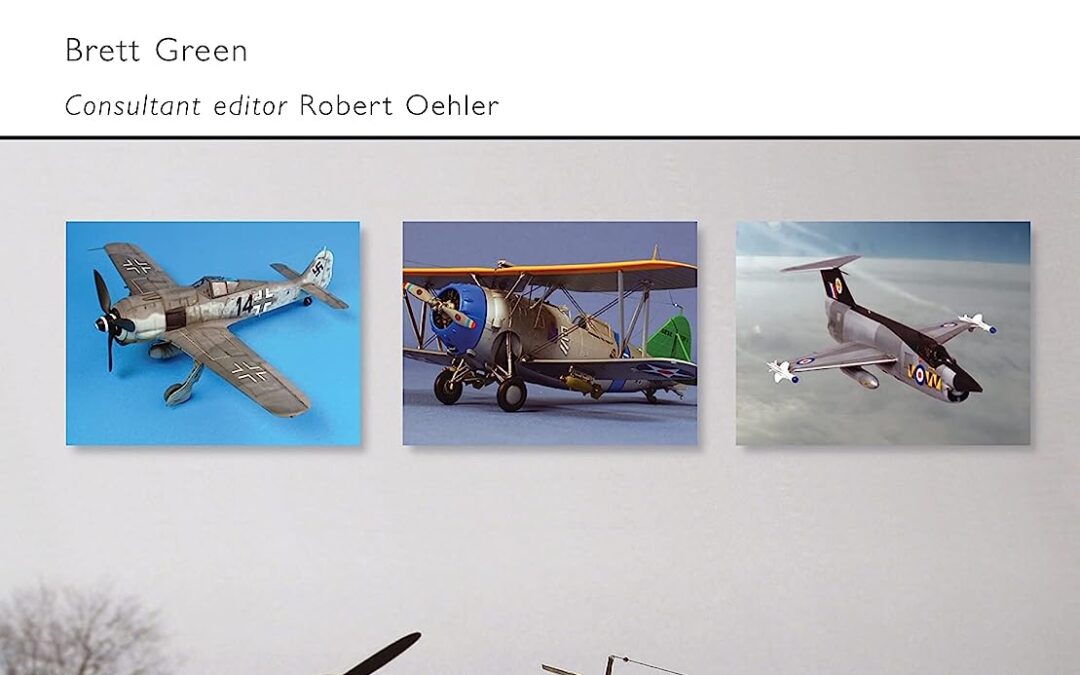
Brett Green, one of the hobby’s leading names, provides a comprehensive introduction to all of the basic techniques and materials needed to build scale aircraft, from first opening the kit box to displaying the finished model – all in one clear and easy-to-follow expert guide. The many detailed photographs with step-by-step captions, and the accessible and informative text cover every aspect of aircraft kit construction from initial preparation through all stages of assembly to detailed finishing. This is an essential resource for the novice aircraft modeller.

Do You Dream of Riding a Motorcycle?
The Craft and Art of Motorcycling will help make your dream a reality—from your first ride to the road ahead.
Hollywood’s go-to riding guru, Steve Krugman, has trained thousands of riders including high-profile actors, musicians, and athletes. The Craft and Art of Motorcycling is based on his years of experience developing unique, effective, and proven riding methods.
In clear, relaxed language, Krugman offers complete understanding of the bike itself and riding fundamentals (the Craft), with concepts, strategies, and insights that lead to mastery on the road (the Art).
Key topics include:
- Motorcycle controls and operation
- Fundamental skills—starting, stopping, shifting, and turning
- Real-world cornering technique
- Low-speed control and emergency maneuvers
- Street- and road-riding strategies
- Managing riding conditions and the elements
- Selecting gear and buying your first bike
The Craft and Art of Motorcycling is an accessible and comprehensive introduction to motorcycle and scooter riding—simply explained and beautifully illustrated throughout—and provides an essential foundation for any rider, whether an aspiring novice, rusty returnee, or weathered road-veteran.
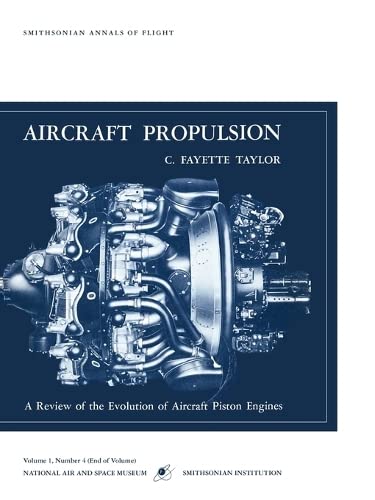
This, the fourth number of Smithsonian Annals of Flight, was the Fourth Lester B. Gardner Lecture, delivered at the Massachusetts Institute of Technology, March 8, 1962, and at the Smithsonian Institution, October 5, 1962. Subsequently it was published in the General Appendix to the Annual Report … of the Smithsonian Institution … for the Year Ended June 30, 1962 (1963). As presented here, the text has been revised, enlarged, and updated. Its 72 illustrations, many of them new, include a number of engines, aircraft, and the materials in the collections of the National Air and Space Museum. With it, for the first time, appears the bibliography which accompanied the original manuscript and which, for lack of space, could not then (1963) be printed. This has since been edited and expanded to approximately double its original length by Dr. Richard K. Smith while he was serving on the Museum staff. Its nearly 600 entries, most of them contemporary accounts, cover the whole range of engine development and related activities from the early beginnings. This bibliography should be a useful and welcome tool, both for the airplane enthusiast and for the historian of aviation technology.
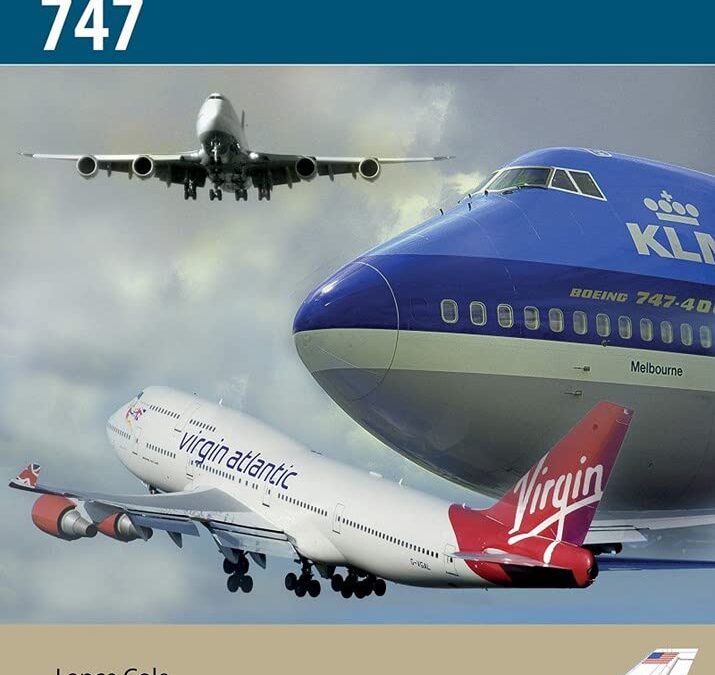
Boeing’s 747 ‘heavy’ has achieved a fifty-year reign of the airways, but now airlines are retiring their fleets as a different type of long-haul airliner emerges. Yet the ultimate development of the 747, the -800 model, will ply the airways for many years to come.
Even as twin-engine airliners increasingly dominate long-haul operations and the story of the four-engine Airbus A380 slows, the world is still a different place thanks to the great gamble that Boeing took with its 747. From early, difficult days designing and proving the world’s biggest-ever airliner, the 747 has grown into a 400-ton leviathan capable of encircling the world. Boeing took a massive billion-dollar gamble and won.
Taking its maiden flight in February 1969, designing and building the 747 was a huge challenge and involved new fields of aerospace technology. Multiple fail-safe systems were designed, and problems developing the engines put the whole programme at risk. Yet the issues were solved and the 747 flew like a dream said pilots – belying its size and sheer scale.
With its distinctive hump and an extended upper-deck allied to airframe, avionics and engine developments, 747 became both a blue-riband airliner and, a mass-economy class travel device. Fitted with ultra-efficient Rolls-Royce engines, 747s became long-haul champions all over the world, notably on Pacific routes. across the Atlantic in January 1970, 747 became the must-have, four-engine, long haul airframe. Japan Airlines, for example, operated over sixty 747s in the world’s biggest 747 fleet.
By the renowned aviation author Lance Cole, this book provides a detailed yet engaging commentary on the design engineering and operating life and times of civil aviation’s greatest sub-sonic achievement.
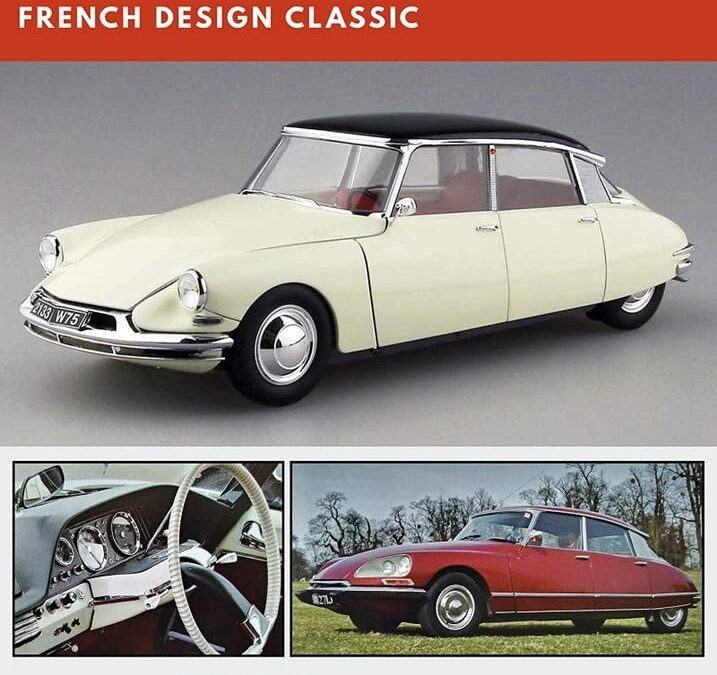
Launched in 1955 yet looking like a sci-fi design proposal for a future then undreamed of, Flaminio Bertoni’s ellipsoid sculpture with wheels that was the Citroën DS stunned the world.
There was a near riot at the 1955 Paris Motor Show launch of the car, orders flooded in for this, the new ‘big Citroën’ (a Voiture a Grande Diffusion or VGD) as the car that replaced the legendary Traction Avant range.
The term ‘DS’ stems from two Citroën parts of nomenclature – the type of engine used as the 11D, (D) and the special hemispherical design of the cylinder head as ‘Culasse Special’ (S): DS out of ‘Deesse’ or Goddess, was a more popular myth of ‘ DS’ origination, but an erroneous one.
But it was not just the car’s aerodynamically advanced body shape (Cd. 0.37) that framed the genius of the DS: hydro pneumatic self-levelling suspension, advanced plastics and synthetics for the construction of the roof and dashboard/fascia, and amazing road holding and cabin comfort were some of this car’s highlights.
Only the lack of an advanced new engine was deemed a missed opportunity. In fact Citroën had created a new engine for the car but lacked the resources to produce it in time for 1955.
DS was a major moment in the history of car design, one so advanced that it would take other auto manufacturers years to embrace. Yet DS in its ‘aero’ design was the precursor to today’s low drag cars of curved form.
Manufactured worldwide, used by presidents, leaders, diplomats, farmers and many types of people, the DS redefined Citroën, its engineering and design language, and its brand, for decades to come.
Prone to rust, not the safest car in the world, and always lacking a smoother powerplant, the DS still became an icon of car design.
Reshaped with a new nose and faired-in headlamps in 1967, DS remained in production until 1975.
Across its life DS spawned an estate car variant as the ‘Safari’, a range of limousines, two-door convertibles, and even coach-built coupes and rally specials.
This car was a product design that became an article of social science – it was that famous and it defined a European design movement upon a global stage then packed with ‘me too’ copyist designs.
The DS or ‘Goddess’ as it was tagged, was a tear-drop shaped act of French confidence in a world of the regurgitation of the known. Some argue that DS and its effect has never been surpassed.
This new value-for-money book provides innovative access to the design, history, and modeling of the revolutionary DS – one of the true ‘greats’ of motoring history and, a contemporary classic car of huge popularity.
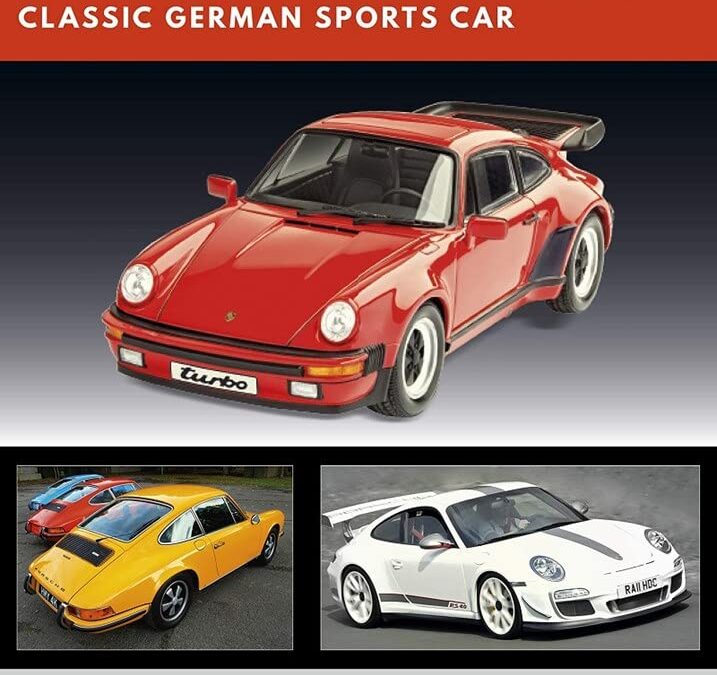
The aim of this innovative series is to provide model makers and car enthusiasts with a new standard of primarily visual reference of both full-size cars and their scale models.
The aim of this innovative series is to provide model makers and car enthusiasts with a new standard of primarily visual reference of both full-size cars and their scale models. Each book contains detailed technical information imparted through drawings and photographs while the meticulously researched full-color profiles provides a complete reference for paint schemes and markings. In addition, every volume of the CarCraft series features summaries of design histories and operational careers, and reviews of available kits.
Recognized as one of the most important sports cars in the history of the automobile, Porsche’s 911 represents a vital story in the annals of the design and driving of the motor car. This new book delivers an innovative format to the car enthusiast by covering the engineering, design, and modeling of Porsche’s 911 series.
A true icon, 911 is the designer legend – and a driving tool par excellence: the 911 stemmed from the Porsche 356 yet created a new era and a new international definition of style amid a global motor sport record of success across race and rally events
Here in CarCraft title Number Two, experienced automotive writer, industrial designer and Porsche enthusiast Lance Cole pays tribute to the car in a detailed yet engaging commentary. New photography, the design story, and full coverage of the modeling options in synthetic materials and die cast metals, create a narrative of vital interest.
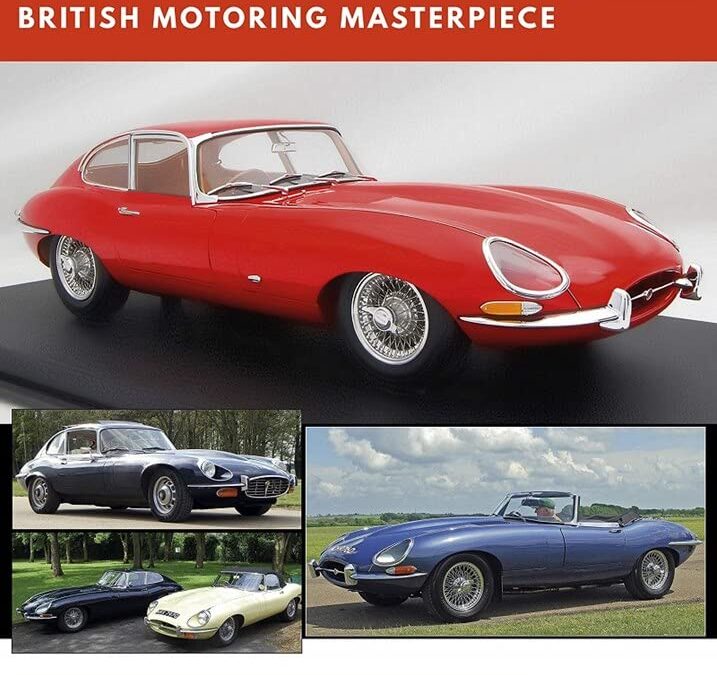
The third book in the new CarCraft series, Jaguar E-Type, frames the legend of what many call the world’s most beautiful car design.
The aim of this innovative series is to provide model makers and car enthusiasts with a new standard of primarily visual reference of both full-size cars and their scale models. Each book contains detailed technical information imparted through drawings and photographs while the meticulously researched full-color profiles provides a complete reference for paint schemes and markings. In addition, every volume of the CarCraft series features summaries of design histories and operational careers, and reviews of available kits.
The third book in the new CarCraft series, Jaguar E-Type, frames the legend of what many call the world’s most beautiful car design. Sir William Lyons and Malcolm Sayer carved automotive history with this car across its 1960s-1970s incarnations from roadster to coupé amid the fitting of Straight-Six, to V12 engines.
With its new definition of sculptural styling, performance, handling and innovative style, the E-Type or XKE series in the USA, created a car of global impact that remains a great classic of all time.
Here, experienced automotive writer, and industrial designer, Lance Cole pays tribute to the car in a detailed yet engaging commentary. New photography, the design story, and full coverage of the modeling options in synthetic materials and die cast metals, create a narrative of vital interest.
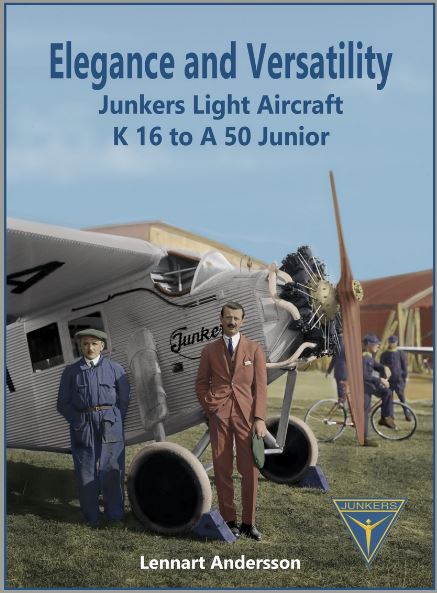
This book is about all the smaller Junkers types that were designed and built during the same period as the more well-known F 13, G 24 and W 33/W 34. The A 20 and A 35/K 53 were produced in great numbers and served in countries all over the world. The majority were of the military version, but the A 20 was also used for pioneering night airmail services.
The two-seat H 21 and the single-seat S 22 fighter were built for the Soviet Union. The K 47 two-seat fighter was sold to China and was used in dive-bombing experiments and the A 50 Junior was intended for the emerging private aircraft owner market. Junkers built substantial numbers of the Junior and they and found buyers in all corners of the world. It became world famous especially for daring long-distance flights made by illustrious aviators, including female pilots.
Contents:
Introduction
For Travellers in Style – The Junkers K 16
Two-Seaters for Private Flying and Training – The Junkers T Series
Civil and Military Use – The Junkers A 20 and Derivatives
Specially Made for the Red Air Fleet – The Junkers J 21 and J 22
Two-seat Fighter and ‘Stuka’ – The Junkers K 47
The Private Aircraft Owners Dream – The Junkers A 50 Junior
Specifications and Performance
Drawings
Sources and Bibliography
Index
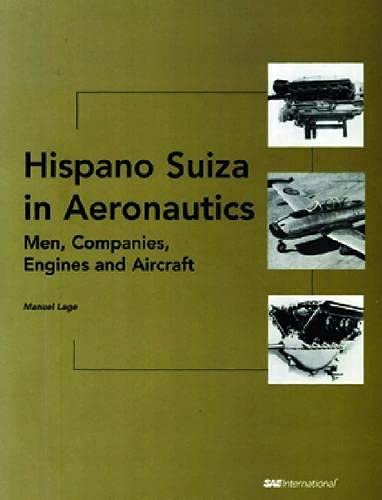
Hispano Suiza, a firm of sound Spanish tradition and origins, is little known to the new generations today. Great luxury automobiles made at the Hispano Suiza factories in Barcelona and Paris during the 1920s and 1930s are usually brought to mind to those who have heard of the company. However, Hispano Suiza developed other activities of considerable industrial, commercial, and strategic importance – aviation engines produced in Spain and France, and aircraft constructed only in Spain.
In 1923, Hispano Suiza established the Société Française Hispano Suiza in France. Although the highest percentage of the company’s assets was Spanish, Hispano Suiza became the first company in France to manufacture aviation engines and the main supplier for the Armée de l’Air until the 1960s.
This book examines Hispano Suiza’s evolution and the technological advances of its engines. Starting with circumstances that favored the creation of an indigenous aviation engine, the story follows engine development for a breadth of applications, particularly aviation engines, and describes, in parallel, the birth and development of aircraft in Spain by Campañía Española de Construcciones Aeronáuticas (CECA), La Hispano, La Hispano Aircraft, La Hispano Suiza, SAF-5, SAF-15, and La Hispano Aviación.
Although numerous books have been published on the more common developments of Hispano Suiza, until now none have been published on the company’s primary line of business, aircraft and aviation engines. Hispano Suiza in Aeronautics: Men, Companies, Engines and Aircraft is an in-depth study covering a vast period in the history of the Spanish and French aircraft industry (1913-1967) and offers insight into Hispano Suiza’s significant developments.
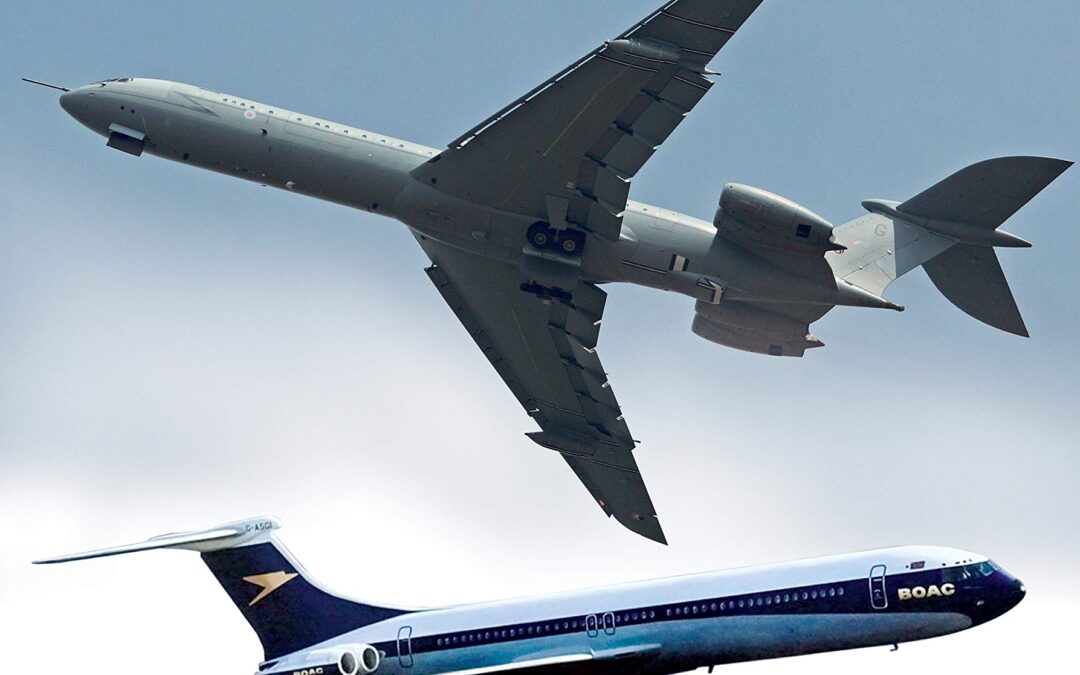
Designed and manufactured by the men who would make Concorde, the Rolls-Royce powered Vickers VC10, and its larger variant, the Super VC10, represented the ultimate in 1960s subsonic airliners. The VC10 was Britain’s answer to the Boeing 707 and the Douglas DC-8.
The VC10 was a second-generation jetliner designed in the 1960s and manufactured into the 1970s. It incorporated advanced engineering, new aerodynamics, and design features, to produce a swept, sculpted machine easily identifiable by its high T-tail design and rear-engine configuration.
The VC10 could take off in a very short distance, climb more steeply and land at slower speed than its rivals the Boeing 707 and Douglas DC-8. These were vital safety benefits in the early years of the jet age. At one stage, the Super VC10 was the biggest airliner made in Europe and the fastest in the world.
On entry into service, both the VC10 and the longer Super VC10 carved out a niche with passengers who enjoyed the speed, silence and elegance of the airliner. Pilots, meanwhile, loved its ease of flying and extra power. Yet the VC10 project was embroiled in political and corporate machinations across many years and more than one government. BOAC got what they asked for but went on to criticize the VC10 for not being a 707 – which was a different beast entirely. Questions were asked in parliament and the whole story was enmeshed in a political and corporate affair that signified the end of British big airliner production. Yet the men who made the VC10 also went on to design and build Concorde. Many VC10 pilots became Concorde pilots.
In service until the 1980s with British Airways, and until 2013 with the RAF, the VC10 became a British icon and a national hero, one only eclipsed by Concorde. It remains an enthusiast’s hero.
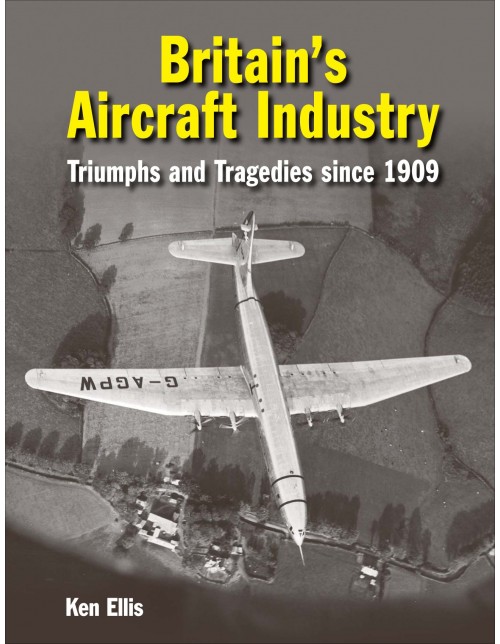
Britain established the world’s first aircraft factory in 1909 after the Short brothers met up with the American Wright brothers and struck a deal. The industry expanded rapidly to rise to the challenge of World War One with such thoroughbreds as the Camel and the SE.5. The post-conflict slump proved to be difficult but classics such as the Moths, the Hart family and the Gladiator maintained Britain’s leadership. Another war loomed and iconic types such as the Hurricane, Lancaster, Mosquito, Spitfire and the Meteor jet appeared.
With the return of peace over 20 major manufacturers faced inevitable contraction. The misguided Bristol Brabazon airliner was a dead end but the superb de Havilland Comet and Vickers Viscount led the field. Canberras, Hunters, Lightnings and the V-bombers met the Cold War confrontation.
For the first time here is a readable, highly-illustrated, examination of the entire industry; its heritage and the changes it faces in the 21st century, both technical and political. The life and times of the 40 ‘big names’ from Airbus to Westland: aircraft, designers, factories, failures and successes, mergers and closures are all explained, supported by statistical tables and copious illustrations. Here is a celebration of a world class industry that remains at the cutting edge of excellence.
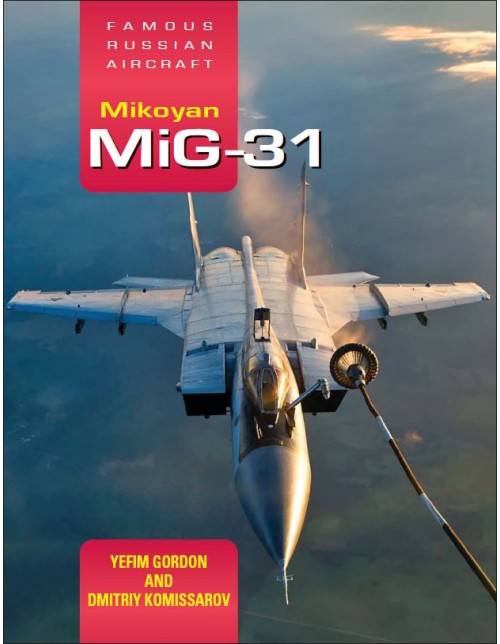
As early as 1965, when the MiG-25 interceptor was in the midst of its test program, the Mikoyan Design Bureau started work on an even more capable two-seat interceptor meant to provide adequate protection for the huge expanses of Siberia and the Soviet Far East. Though superficially resembling a MiG-25 with tandem cockpits, the aircraft was soon designated the MiG-31.
Initially dubbed Super Foxbat in the West but soon renamed Foxhound, the MiG-31 first flew on 16 September 1975 and, after a five-year trials program, achieved initial operational capability in 1980. Full-scale deliveries began in 1982 to units covering the Moscow Air Defense Zone, the Arctic and the Far East. One of the effects was that the SR-71s now stayed away from the Soviet borders.
Efforts to improve the Foxhound began right away. In-flight refueling capability was added in 1989 to overcome the problem of inadequate range. Next, the MiG-31B, featuring upgraded avionics and better weapons, entered production in 1990; existing MiG-31s were brought up to the new standard (except for IFR capability) as the MiG-31BS.
The radically improved ‘Generation 4+’ MiG-31M featuring a new WCS and new R-37 ultra-long-range AAMs first flew in 1985 but never entered production because of funding shortages. Today, the MiG-31s remains one of modern Russia’s key air defense assets, and new versions keep appearing. The book gives the complete development and service history of this remarkable aircraft and is richly illustrated with color photos and color artwork throughout.
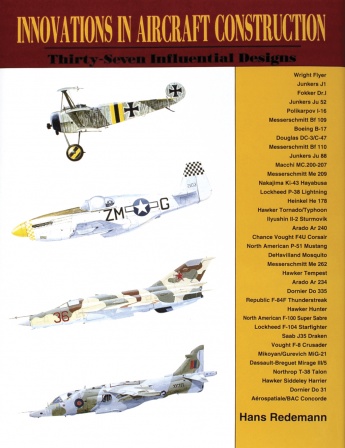
From the Wright Brothers’ famous “Wright Flyer” in 1903, to the “Concorde” in 1969 this book emphasizes the great strides made in aircraft construction in the sixty-six years between these two famous designs.
Presented in chronological order are thirty-seven classic designs that changed the history of flight: The Wright Flyer, Junkers J1, Fokker Dr. I, Junkers Ju 52, Polikarpov I-16, Messerschmitt Bf 109, Boeing B-17, Douglas DC-3/C-47, Messerschmitt Bf 110, Junkers Ju 88, Macchi MC.200-207, Messerschmitt Me 209, Nakajima Ki-43 Hayabusa, Lockheed P-38 Lightning, Heinkel He 178, Hawker Tornadeo/Typhoon, Ilyushin II-2 Sturmovik, Arado Ar 240, Chance Vought F4U Corsair, North American P-51 Mustang, De Havilland Mosquito, Messerschmitt Me 262, Hawker Tempest, Arado Ar 234, Dornier Do 335, Republic F-84F Thunderstreak, Hawker Hunter, North American F-100 Super Sabre, Lockheed F-104 Starfighter, Saab J35 Draken, Vought F-8 Crusader, Mikoyan/Gurevich MiG-21, Dassault-Breguet Mirage III/5, Northrop T-38 Talon, Hawker Siddeley Harrier, Dornier Do 31 and the Aerospatiale/BAC Concorde.
Each aircraft is shown in photographs, scale line drawings from various perspectives, and presents the various models, prototypes and export models – technical aspects and measurements are also given.
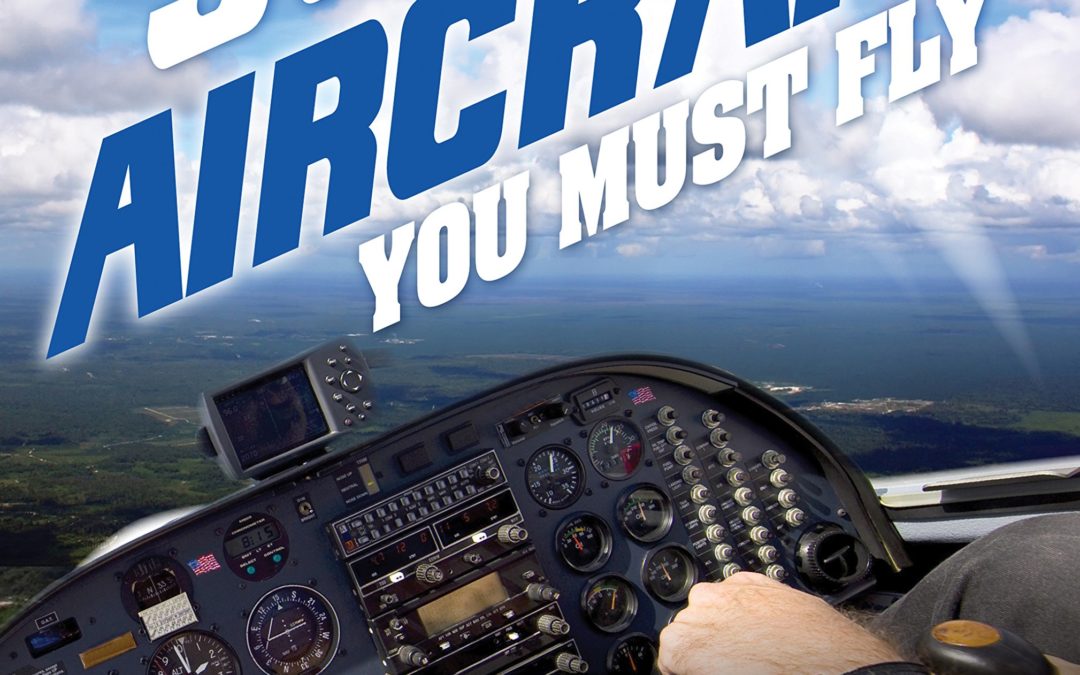
A fascinating plane-by-plane journey through aviation history, this beautifully illustrated book covers 365 of the most iconic aircraft in world history that enthusiasts, serious-minded hobbyists, and casual fans would love to fly if given the chance. Clear photography, historical context, and specs get you as close as possible to these planes without setting foot in a hangar.
Aviation has come a long way since the Wright Brothers built their glider in Kitty Hawk, North Carolina, in 1903. From among the thousands of different types of military and commercial aircraft constructed over the past 100 years, aviation expert Robert F. Dorr profiles the most important, fascinating, and famous aircraft ever made. Your opinions might differ, but you wouldn’t want to miss out on the planes Dorr identifies as flights of a lifetime.
While covering every era of aviation history, many of the planes in 365 Aircraft You Must Fly were flown during World War II, a time unmatched in aviation for its technological advances, romance, and clarity of purpose. During this golden age of flying, propellers gave way to jet engines, and the “Greatest Generation” fought gallantly in them.
Explore the history, thrills, and joy of flying the world’s most amazing 365 aircraft.
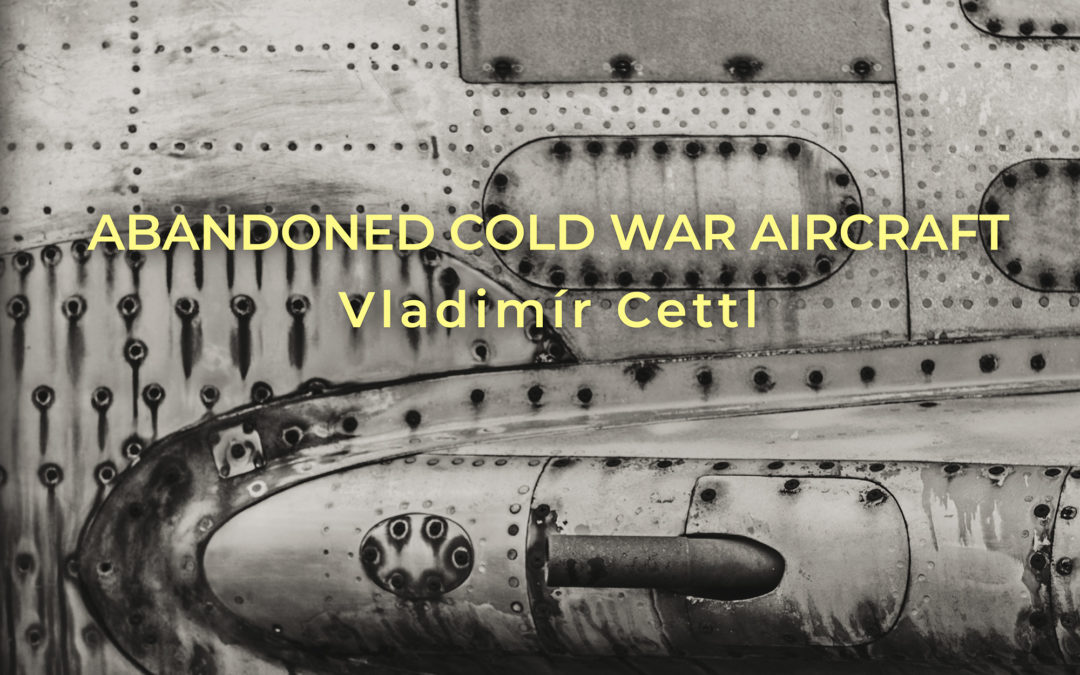
The latter half of the twentieth century was full of illusions. We lived in an illusion of peace, an illusion that Europe was not at war and that the horrors of the Second World War would not be repeated. But in reality, society was preparing for the next war. As children we donned thin plastic ponchos and practiced how to survive a chemical or nuclear attack out in the fields. The threat of a new military conflict hung in the air constantly. History now denotes this time of apparent peace more accurately as the Cold War. It lasted for several long decades, passed through various phases, crises, milestones, victories and defeats, but peace was only illusory.
Air forces were one of the most important military branches during this era. East and West competed in speed, flying range and numerical superiority. Technical development forced both sides to quickly replace large numbers of machines, which is why we can now find surplus aircraft from the Cold War on display in military museums.
As I started my search, I soon found that, as opposed to old cars, planes are not often found in barns or backyards. It is not easy for private owners to get their hands on military machines. I hence focused on museums and associations for aviation enthusiasts. The Czech Republic is a wonderful country in this sense, because Czechs are sentimental people and try to keep things alive even if it does not make sense financially. I presume that is why we have so many aviation museums. But the thing is, I am not interested in those nicely restored, polished planes. I am after old, rusty ones. And so I had to look for collectors who could not afford expensive restorations and who were showing history the way I wanted it – authentic and dilapidated. And since repairing planes is such a demanding hobby, I ended up finding plenty. The photos were taken 2014–2019 in five countries: Czech Republic, Slovakia, Germany, Poland and Cuba.
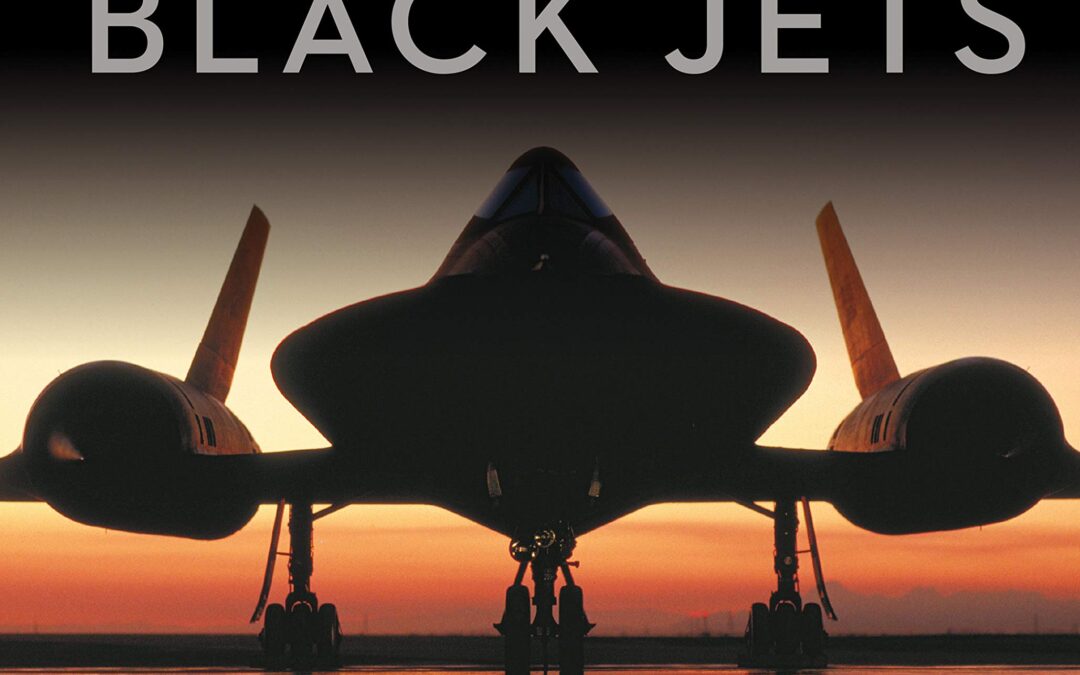
When most of us think of Area 51, we think of aliens, UFOs, and controversial government cover-ups. It’s easy to forget that, since the mid-1950s, the United States’ famed extension of Edwards Air Force Base has served as a top-secret CIA testing ground for many of the most groundbreaking advancements in American military aviation technology. In Secret Jets, author and military historian Bill Yenne offers the first fully illustrated chronology of Area 51’s most famous aircraft projects, including Lockheed’s U-2 “Dragon Lady” and SR-71 “Blackbird” reconnaissance planes, drones ranging from the early Lockheed D-21 to the modern-day General Atomics MQ-1 Predator, and the famous F-117 Nighthawk stealth fighter produced by the Have Blue program during the 1970s. Each project is given its own fascinating chapter illuminating the aircraft’s development at this famed location. But beyond the aircraft themselves, Secret Jets also covers a handful of the many classified experimental programs carried out at Area 51 over the years, such as Have Doughnut, Have Ferry, and Have Drill – secret undertakings that successfully reverse-engineered such enemy aircraft as the Russian MiG during the Cold War. Presented in beautiful hardcover format and illustrated with historic color and black-and-white photographs, diagrams, and maps, this book reveals Area 51 for what it truly is: a clandestine area for the United States’ most cutting-edge technological innovators in military aviation.

Spacecraft takes a long look at humankind’s attempts and advances in leaving Earth through incredible illustrations and authoritatively written profiles on Sputnik, the International Space Station, and beyond.
In 1957, the world looked on with both uncertainty and amazement as the Soviet Union launched Sputnik 1, the first man-made orbiter. Sputnik 1 would spend three months circling Earth every 98 minutes and covering 71 million miles in the process. The world’s space programs have traveled far (literally and figuratively) since then, and the spacecraft they have developed and deployed represent almost unthinkable advances for such a relatively short period.
This ambitiously illustrated aerospace history profiles and depicts spacecraft fromSputnik 1 through the International Space Station, and everything in between, including concepts that have yet to actually venture outside the Earth’s atmosphere. Illustrator and aerospace professional Giuseppe De Chiara teams up with aerospace historian Michael Gorn to present a huge, profusely illustrated, and authoritatively written collection of profiles depicting and describing the design, development, and deployment of these manned and unmanned spacecraft. Satellites, capsules, spaceplanes, rockets, and space stations are illustrated in multiple-view, sometimes cross-section, and in many cases shown in archival period photography to provide further historical context.
Dividing the book by era, De Chiara and Gorn feature spacecraft not only from the United States and Soviet Union/Russia, but also from the European Space Agency and China. The marvels examined in this volume include the rockets Energia, Falcon 9, and VEGA; the Hubble Space Telescope; the Cassini space probe; and the Mars rovers, Opportunity and Curiosity.
Authoritatively written and profusely illustrated with more than 200 stunning artworks, Spacecraft: 100 Iconic Rockets, Shuttles, and Satellites That Put Us in Space is sure to become a definitive guide to the history of manned space exploration.
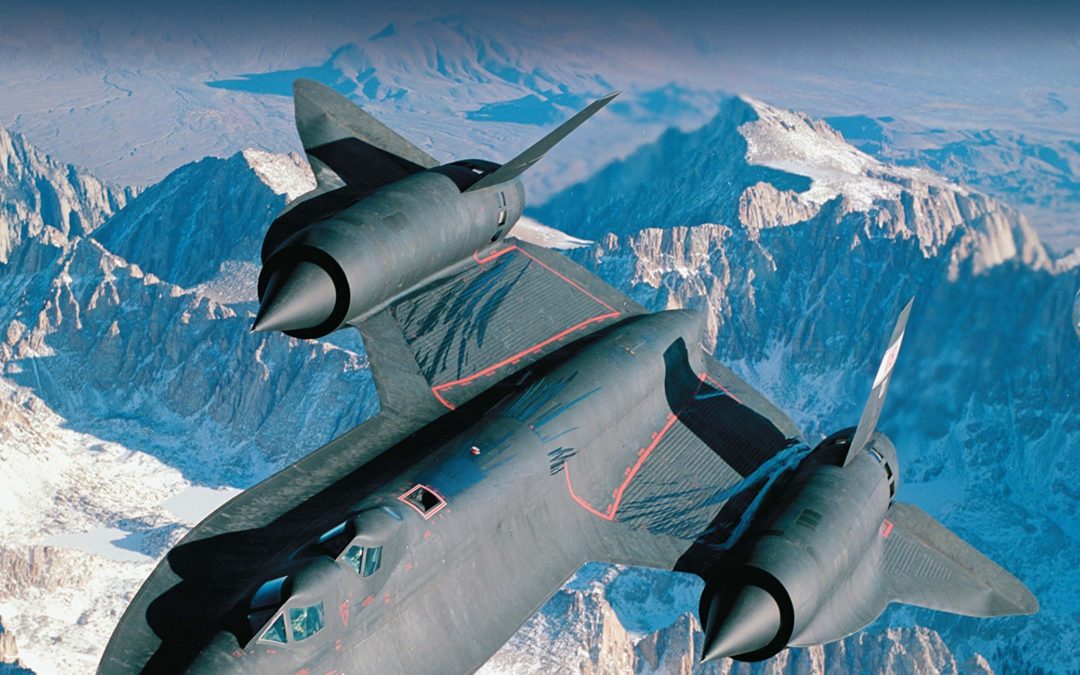
When most of us think of Area 51, we think of aliens, UFOs, and controversial government cover-ups. It’s easy to forget that, since the mid-1950s, the United States’ famed extension of Edwards Air Force Base has served as a top-secret CIA testing ground for many of the most groundbreaking advancements in American military aviation technology. In Secret Jets, author and military historian Bill Yenne offers the first fully illustrated chronology of Area 51’s most famous aircraft projects, including Lockheed’s U-2 “Dragon Lady” and SR-71 “Blackbird” reconnaissance planes, drones ranging from the early Lockheed D-21 to the modern-day General Atomics MQ-1 Predator, and the famous F-117 Nighthawk stealth fighter produced by the Have Blue program during the 1970s. Each project is given its own fascinating chapter illuminating the aircraft’s development at this famed location. But beyond the aircraft themselves, Secret Jets also covers a handful of the many classified experimental programs carried out at Area 51 over the years, such as Have Doughnut, Have Ferry, and Have Drill – secret undertakings that successfully reverse-engineered such enemy aircraft as the Russian MiG during the Cold War. Presented in beautiful hardcover format and illustrated with historic color and black-and-white photographs, diagrams, and maps, this book reveals Area 51 for what it truly is: a clandestine area for the United States’ most cutting-edge technological innovators in military aviation.
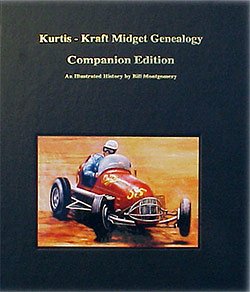
This “Companion Edition” is a full volume update of Bill Montgomery’s December 1999 publication, Kurtis-Kraft Midget- A Genealogy of Speed.”
The companion is hard bound, 167 indexed pages, and it contains hundreds of remarkably good photographs of Kurtis-Kraft midgets everywhere they raced. It is inconceivable that any open wheel enthusiasts would not enjoy this book.
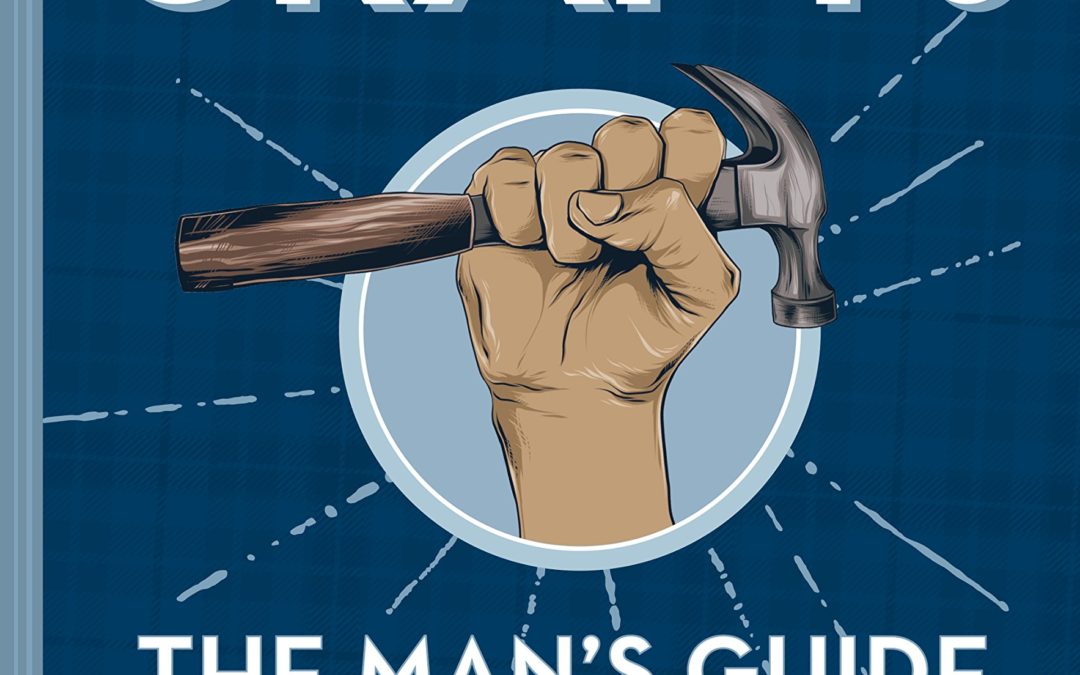
Dude Crafts is loaded with more than 50 slightly twisted, but somehow useful, projects that will keep crafty men out of trouble (or, sometimes, in it).
Whether making life easier with ingenious hacks or providing self-amusement, the 50 projects presented in Dude Crafts are sure to get any guy’s creative wheels turning. These DIY projects will get you on the path to developing your own creations, and impressing your friends.
You’ll learn how to:
- Craft an iPad cover from an old book
- Build a metal forge out of a busted microwave
- Cook a meal in the dishwasher
- Re-purpose an electric saw into a cocktail blender
- Fashion a Swiss army knife for your keys
- Outfit an unsuspecting co-worker’s office chair with an air horn
Each project is accompanied by a parts list and step-by-step photo instructions to get you building; often by hacking subpar stock goods or upcycling discarded objects into functional works of art and conversation pieces. No matter how off-kilter the project may appear on the surface, it’s sure to payoff as a useful tool, an art piece, the punch line to a practical joke or, best of all, a combination of all three.
Whatever the motive—to solve a problem, to play a joke, or for self-entertainment—Dude Crafts will get dudes off the sofa and into the workshop!






















